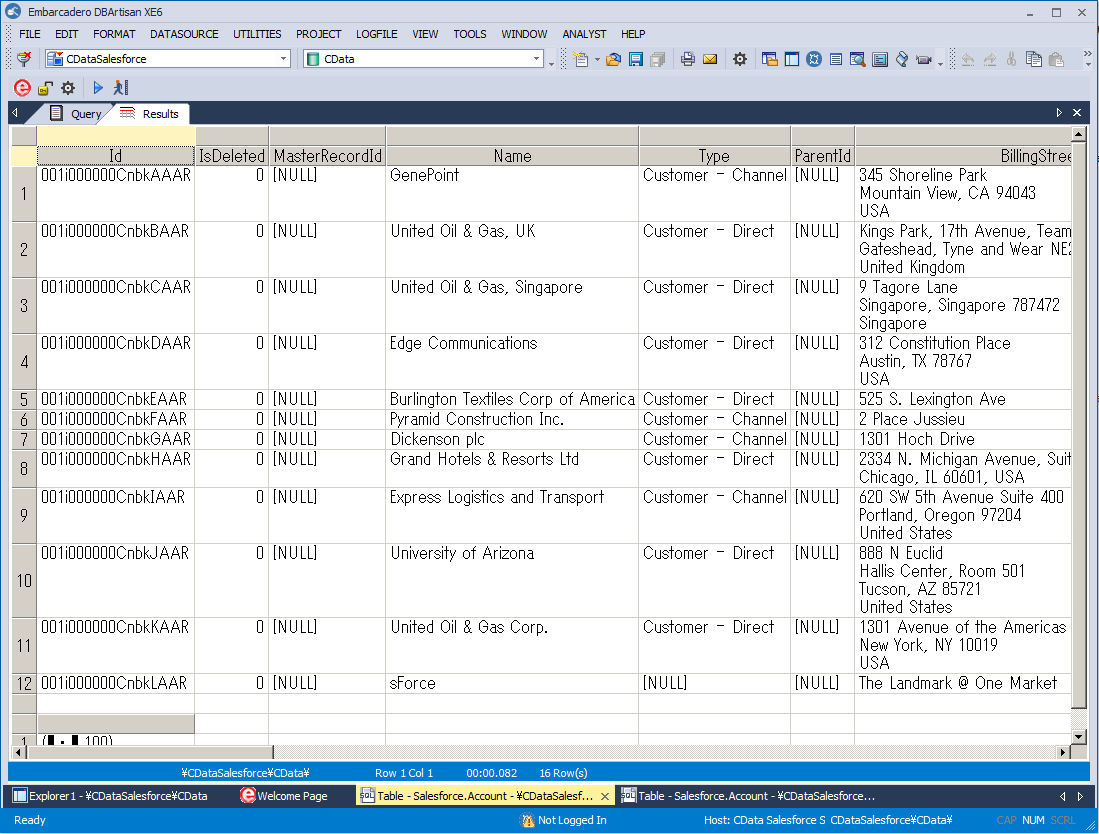Discover how a bimodal integration strategy can address the major data management challenges facing your organization today.
Get the Report →Connect to Azure Table Data in DBArtisan
Use wizards in DBArtisan to configure Azure Table data as a data source.
The CData ODBC Driver for Azure Table seamlessly integrates Azure Table data into database management tools like DBArtisan by enabling you to access Azure Table data as a database. This article shows how to create an data source for Azure Table in DBArtisan and execute queries. You can then edit data visually and execute standard SQL.
Integrate Azure Table Data into DBArtisan Projects
If you have not already, first specify connection properties in an ODBC DSN (data source name). This is the last step of the driver installation. You can use the Microsoft ODBC Data Source Administrator to create and configure ODBC DSNs.
Specify your AccessKey and your Account to connect. Set the Account property to the Storage Account Name and set AccessKey to one of the Access Keys. Either the Primary or Secondary Access Keys can be used. To obtain these values, navigate to the Storage Accounts blade in the Azure portal. You can obtain the access key by selecting your account and clicking Access Keys in the Settings section.
You can then follow the steps below to register Azure Table data as a database instance in your project:
- In DBArtisan, click Data Source -> Register Datasource.
- Select Generic ODBC.
- Enter a name for the data source and select the DSN.
![The DSN of the data source to be registered. (Salesforce is shown.)]()
- Finish the wizard to connect to Azure Table data. Azure Table entities are displayed in the Datasource Explorer.
![The Datasource Explorer. (Salesforce is shown.)]()
You can now work with Azure Table data as you work with any other database. See the driver help documentation for more information on the queries supported by the Azure Table API.









